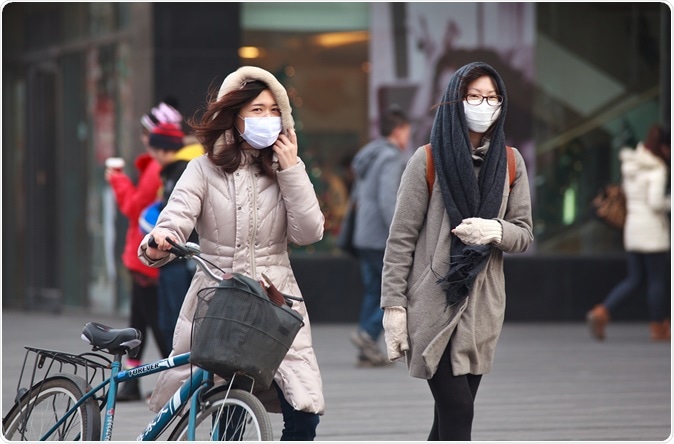The evidence of air pollution – the soot and the fumes, has been seen in the lungs till date. In a new study, for the first time, the evidence of air pollution is seen in the placenta of a pregnant women.
Researchers from the Queen Mary University in London have, for the first time, found small particles of carbon in the placenta of five mothers who never smoked. These five women underwent planned caesarean section births and lived in London during their pregnancy. The carbon particles detected in the placenta matched with those produced when fossil fuels are burnt. This new study has confirmed the worst fears that air pollution can harm the unborn babies of the pregnant women.

Research shows pollution is reaching the placenta. Image Credit: Shutterstock
All five deliveries were uneventful and the babies born at the Royal London Hospital following uncomplicated pregnancies were all healthy. The women had consented to allowing the researchers investigate their placenta after birth. The team found placental macrophages in the samples that normally work as the immune defence cells within the body. These macrophages normally engulf bacteria and pollution particles and protect the fetus. When the researchers used high-powered microscopes to look at the macrophages, they noted small black areas that showed the carbon particles. They looked at a total of 3,500 placental macrophage cells and in these 60 of them had 72 small black zones in total. Each placenta had around five square micrometres of the black areas on average. Small carbon particles were separately detected in two placentas using electron microscope.
According to Dr Lisa Miyashita, lead researcher of the study and a post doctoral researcher from Queen Mary University of London, exposure to air pollution have been previously associated with low birth weights among babies, premature births and also a raised risk of infant mortality and respiratory illnesses during childhood. This is the first study that shows actual evidence of these particles in the placenta and blood streams of the mothers. “Until now, there has been very little evidence that inhaled particles get into the blood from the lung. We’ve known for a while that air pollution affects foetal development and can continue to affect babies after birth and throughout their lives,” she said. “We were interested to see if these effects could be due to pollution particles moving from the mother’s lungs to the placenta.”
Dr Miyashita presented the findings of this study at the European Respiratory Society International Congress on Sunday (16th September 2018) in Paris, along with Dr Norrice Liu, a paediatrician and clinical research fellow.
Dr. Liu explained that most of the soot particles should have been engulfed by macrophages in the lungs and only very small could have escaped the first lines of defence to reach the blood streams. She said in a statement, “Our results provide the first evidence that inhaled pollution particles can move from the lungs into the circulation and then to the placenta. We do not know whether the particles we found could also move across into the foetus, but our evidence suggests that this is indeed possible. We also know that the particles do not need to get into the baby’s body to have an adverse effect, because if they have an effect on the placenta, this will have a direct impact on the foetus.”
The researchers have urged cleaner and safer air environements for pregnant mothers to minimize risks to the fetus.